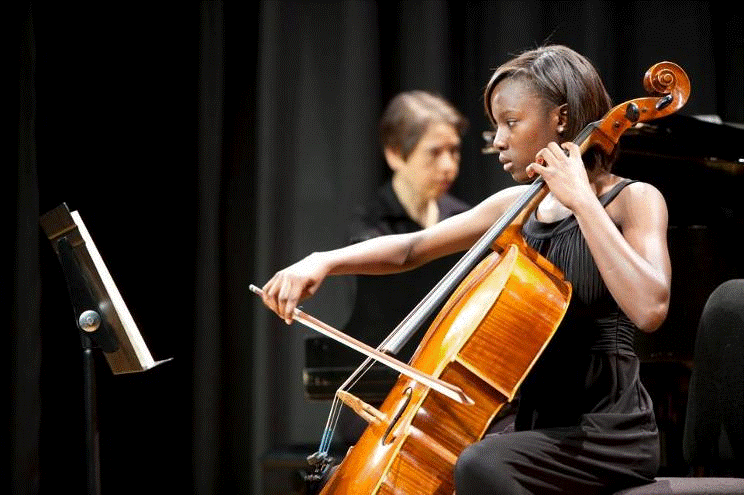
In 2007, the music critic of The Philadelphia Inquirer, Peter Dobrin, wrote a sobering article about the lack of minorities on stage, throughout the audience, back in the administrative offices, and in the board room of America’s top orchestras. He described a valiant effort the orchestra made over twenty years ago to tackle these issues, but it was not nearly enough to fill the gaps.
When Peter posed the question “What has been standing between the orchestra and progress all these years?”, the answers came from all over: they were distracted and had their eyes off the prize, it’s hard, meetings to solve the issues stopped, they didn’t see measurable results, and others simply didn’t seem to understand why. Some people said that progress is a sustained relationship-building effort. One said that people of color were staying away from the orchestra for the same reasons that many people don’t engage: lack of exposure to classical music in childhood. Some people said that classical music is not welcomed in the African American community and it doesn’t connect to our culture. Authorities said that African Americans were told not to audition for orchestras back in the 50s and that has had a ripple effect over the generations.
Is it the orchestra’s fault? Do we need a big-time African American soloist or conductor to become a household name? Were search committees being fair in their assessments of the audition or interview panel? In the spring of 2007, I wrote to Peter Dobrin as an aspiring classical trumpeter who dreamed of solving these problems and changing the rules from the back row of an orchestra:
“It is not in our culture to sacrifice to gain entrance in schools like Curtis and eventually lead lives as musicians in top orchestras. What put my brother and I into Curtis (my sister was a runner up) was the opportunities to study with the best musicians in Atlanta, obtaining the best instruments and learning experiences like the Interlochen Arts Camp. Programs like the Atlanta Symphony Orchestra’s Talent Development Program bridged the gap that any family sacrifices for their kids to become the world’s next best musician.”
The ASOTDP program was the vision of Azira G. Hill, who served on the Board of Directors for the symphony and questioned why her daughter was the only student of color in the ASO’s youth orchestra. Her solution was simple: ensure that students of color in Atlanta had early exposure to high-quality classical music education and the proper support and training to be competitive for top colleges in the country. Graduates attended Curtis, Juilliard, and NEC in addition to Stanford, Princeton, and Harvard. After 20 years of implementing this program, a 60 piece orchestra was assembled to perform for a sold-out audience in Atlanta.
This event is the most significant performance that has happened in Atlanta Symphony Hall. The first time the ASO assembled it’s alumni in an orchestra, the program sold-out and we packed the hall with a lot of people who do not traditionally hear classical music. The performance consisted of pieces by Elgar and Beethoven and the audience consisted of young children to seniors of every race throughout the region. I can’t think of a better way to engage African-American and Latino audiences in classical music than for them to see a group of their own performing flawlessly on the stage that typically doesn’t represent them.
Whatever stood in between the orchestra and progress is no longer important. Progress IS a sustained relationship-building effort of providing exposure to classical music, but it matters how that work is implemented. The art, itself, sees no boundaries or limits. It is us that set the boundaries and our available resources set the limits. The best ideas to reach these communities mean nothing if we are not ready to give our stage to them and give our existing audiences a compelling reason to leave inspired. By asking others to give their resources to make this work happen in a deep and meaningful way, we are indeed giving life back to musicians.
What if we expanded the boundaries? Would the resources follow? What if we wanted our art form to solve the most pressing societal problems? What could Atlanta do with this new army of musicians that graduated from our country’s best conservatories and universities? What could Philadelphia do with a program that has proven to positively impact the lives of the city’s most vulnerable children? How do we let people give us money, rather than making them?
By expanding the boundaries of how we engage the community around us, the depth of impact is better than the breadth. 60 alumni of an intense music training program in Atlanta or over 300 lives that have been touched in an intense after-school program in Philly has allowed hundreds to give millions in support of visions that broke through boundaries and provided higher levels of engagement to students that traditionally did not have access. Give our world of classical music to everyone.
*first published as an ArtsJournal blog



